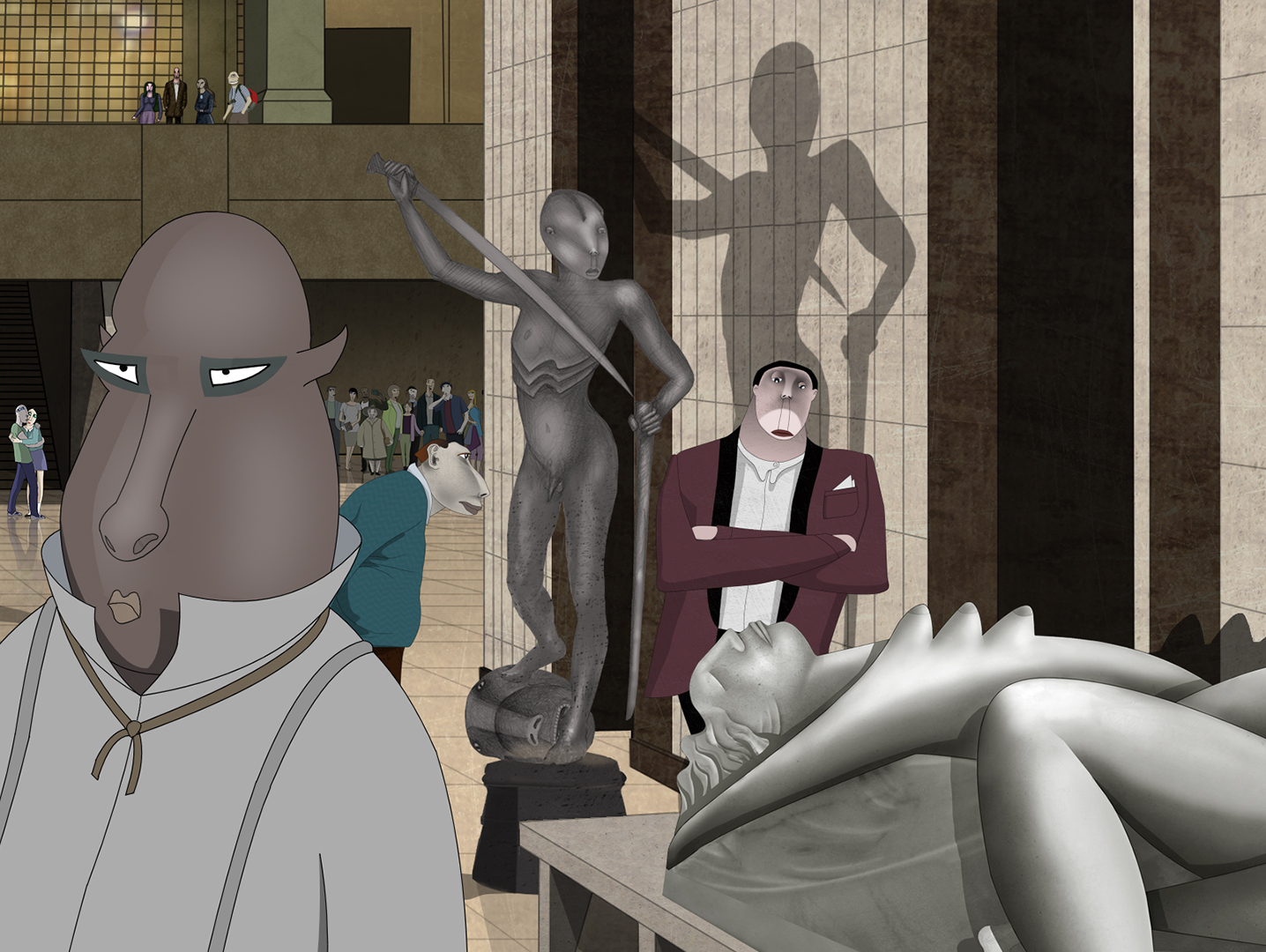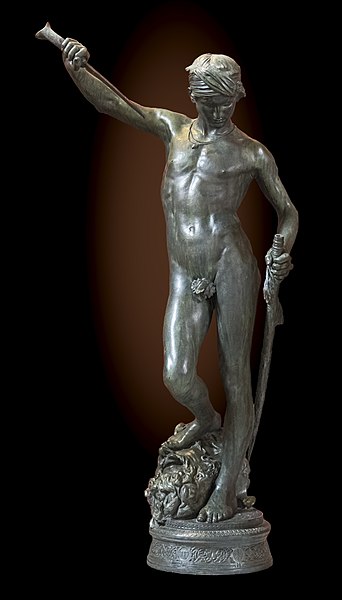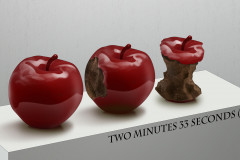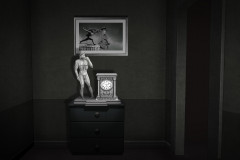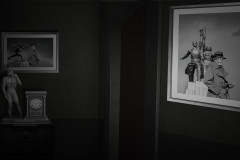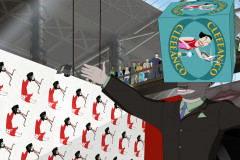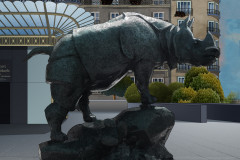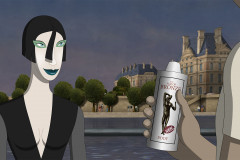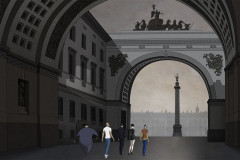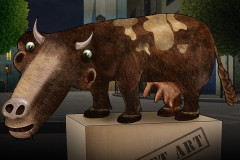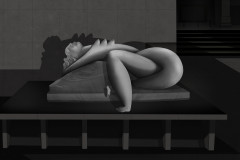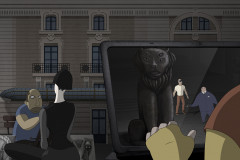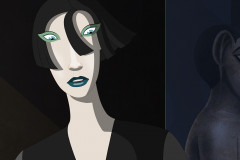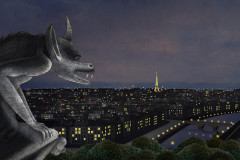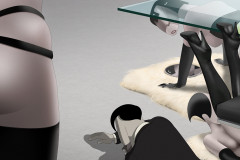Mercié, Antonin (1845-1916): Dávid, 1872 k. (bronz, 184 cm magas, Musée d'Orsay, Párizs). Az akadémikus francia szobrász legnépszerűbb műve, az 1872-es párizsi Szalon aranyérmes szobra az ószövetségi Dávidról. A valósághoz hasonlóan a Ruben Brandtban is a párizsi Musée d'Orsay-ben látható.
Mezítelen ifjú hatalmas szakállas fejen taposva, „a (férfi) Szépség és a Szörnyeteg” - juthat eszünkbe az ekkor még csak zsidó pásztorfiú, később nagy királlyá váló Dávid és az általa legyőzött óriás Góliát kettőséről. A téma az itáliai reneszánsz szobrászatban volt rendkívül népszerű, nem függetlenül az antik aktábrázolások felelevenítésétől. Nem véletlen, hogy a fiatal Mercié is Rómában alkotta meg a szobor gipszmodelljét, amely aztán hatalmas sikert aratott a porosz-francia háború utáni első, 1872-es Szalonon. A francia szobrász nem a téma leghíresebb, Michelangelo-féle feldolgozásából inspirálódott, hanem a firenzei szobrászat Michelangelo előtti legnagyobbjának, Donatellónak Dávid-szobrát vette alapul. Az életnagyságú méret, a kecses, kissé nőies mozdulat, a karcsú test, a láb alatt heverő, fájdalomtól eltorzult Góliát-fej mind olyan elemek, amelyek Donatello 1440 körüli bronzszobrán is felfedezhetőek. Újítás azonban, hogy Mercié szobrán Dávid turbánt visel, ami a Franciaországban a 19. század második felében oly népszerű orientalizmus, azaz keleti kultúrák, motívumok iránti rajongás hatása lehet. A szobor népszerűségét mutatja, hogy rengeteg másolat készült róla, a „polgári erkölcs és jóízlés” jegyében azonban a legtöbb verzión Dávid, az eredeti meztelenségen finomítva, már ágyékkötőben jelenik meg.
Mercié, Antonin (1845–1916): David, c. 1872
(bronze, 184 cm tall, Musée d'Orsay, Paris). This is the most popular work by the academic French sculptor and winner of the gold medal at the 1872 Paris Salon. It depicts the Old Testament hero David and, as in real life, appears in Ruben Brandt, Collector at the Musée d'Orsay.
A naked youth standing triumphantly on the severed head of a bearded giant—one might think of “Beauty and the Beast (in male form),” embodied in the youthful shepherd who would become a great king, and his defeated enemy, Goliath. The subject was a favorite of Italian Renaissance sculpture, closely tied to the revival of classical nude representations. It’s no coincidence that the young Mercié sculpted the plaster model in Rome, and that it became a sensation at the first Salon held after the Franco-Prussian War.
Instead of drawing inspiration from the most famous version—Michelangelo’s—Mercié looked to an earlier Florentine masterpiece: Donatello’s David. Many of the elements in Mercié’s life-sized statue recall Donatello’s 15th-century bronze: the graceful, slightly androgynous pose, the slender body, and the distorted face of Goliath underfoot. One notable innovation, however, is David’s turban—a detail reflecting the orientalist fascination with Eastern motifs that was widespread in late 19th-century France.
The statue’s popularity is evident in the numerous copies made, although most of these later versions feature a loincloth, added to soften the full nudity in accordance with “bourgeois morality and good taste.”






